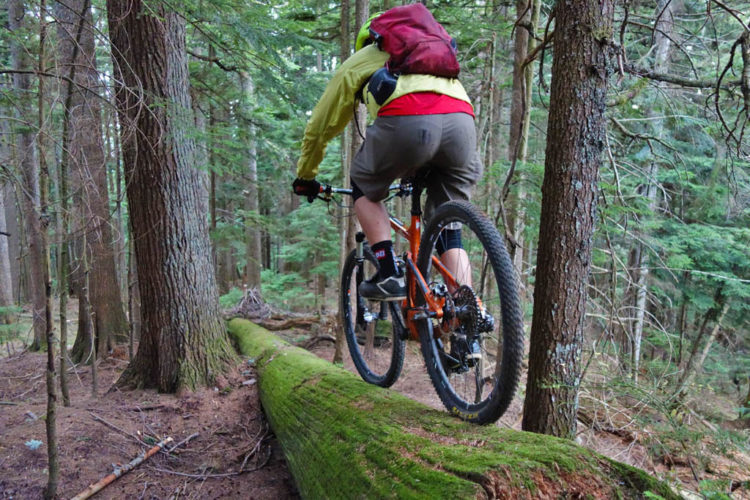Bull Mountain photo by K2K.
It’s day seven of my 29 Trails in 29 Days challenge and things aren’t going so well. I’ve only ridden 2 trails so far and while the roads are better here in Atlanta today, the trails are still shellacked with a thick coating of ice on top of snow. The good news is temperatures are up and things are starting to melt so hopefully I can notch trails #3 and 4 before the weekend is over.
During the Snake Creek Gap Time Trial last weekend I witnessed some pretty fancy riding – and not on the infamous rock gardens. Large stream crossings can be particularly daunting, especially in winter when cold feet and socks can be hazardous to your health and comfort; fortunately I came across a few of techniques we can all use to avoid the deep freeze.
#1: Remove your shoes and socks and walk across.
This technique is the most time consuming but it’s also almost guaranteed to keep your feet dry if done correctly. Admittedly I’ve only done this a few times, usually when there’s a deep stream crossing early in a ride and I want to avoid hours of soggy shoe riding. I saw more than one person doing this at the Snake Creek Gap TT, though last weekend I don’t think it was necessary (I managed to keep my feet dry using another method). This is a great technique for exceptionally deep water or wide river crossings where you anticipate needing to put a foot down.
#2: Do the pedal shuffle
The “pedal shuffle” works like this: starting with the pedals in the horizontal position, pedal forward until your lead pedal almost touches the water. Then, backpedal until your rear pedal just touches the water. Repeat until you get to dry land.
I ended up using this method on Saturday after running out of momentum about 2/3 of the way across the stream crossing. This method works only when the water is less than two inches below your bottom bracket. It can be slow and becomes more difficult on rocky/uneven crossings.
#3: Legs up!
For smooth bottom stream crossings, this one works great. Build up plenty of momentum and just as you reach the water, take your feet off the pedals and lift them as high in the air as you can. Done correctly and with perfect form, you can theoretically cross streams at handlebar depth – just make sure you have enough steam to make it all the way across!
At least one of the guys in my group at Snake Creek Gap TT did this flawlessly and looked like a champ doing it. Just don’t hit any bumps – all your weight is on the saddle which can lead to some serious discomfort (not to mention you may have a hard time balancing with feet in the air!).
#4: Gun it across.
I’m a big fan of this method for shallow crossings and even puddles (keeps the mud off your bike). Given the right conditions and enough speed, riding fast will cause the water to spray sideways, leaving you and your bike completely dry. Go too slow, however, and the water will splash upward, leaving your feet and legs drenched.
The big stream crossing on the 34-mile Snake Creek Gap course is a bit too wide for method #4 but that didn’t stop many riders from trying. In fact, just as one rider was attempting technique #1 (walking) another rider came screaming across, spraying rider #1 with a wall of water (though I’m pretty sure both guys got wet). In a thick German accent, rider #2 apologized profusely saying “So sorry. I didn’t mean. I didn’t mean!” Then he rode off on the other side, leaving rider #1 fuming.
As you can see, there are a number of ways to keep your feet dry when crossing streams on your mountain bike depending on the conditions. Of course there are also a few Gore-Tex mountain bike boots out there but for anything deeper than boot height, you’ll need to use one of these techniques to stay dry. Happy trails!

























12 Comments
Jan 14, 2011
Another method that's been used at the Snake is ghetto waders, aka, trashbags! One for each leg. You can get through some pretty deep water this way and stay totally dry.
Jan 14, 2011
Jan 17, 2011
Jan 14, 2011
Jan 14, 2011
Jan 16, 2011
I'm usually for #3.
Jan 16, 2011
Jan 17, 2011
http://www.gore-tex.com/remote/Satellite/brands/men-pearl-izumi/footwear/1290297785568
Jan 14, 2011
Jan 17, 2011
Jan 14, 2011
Jan 4, 2016